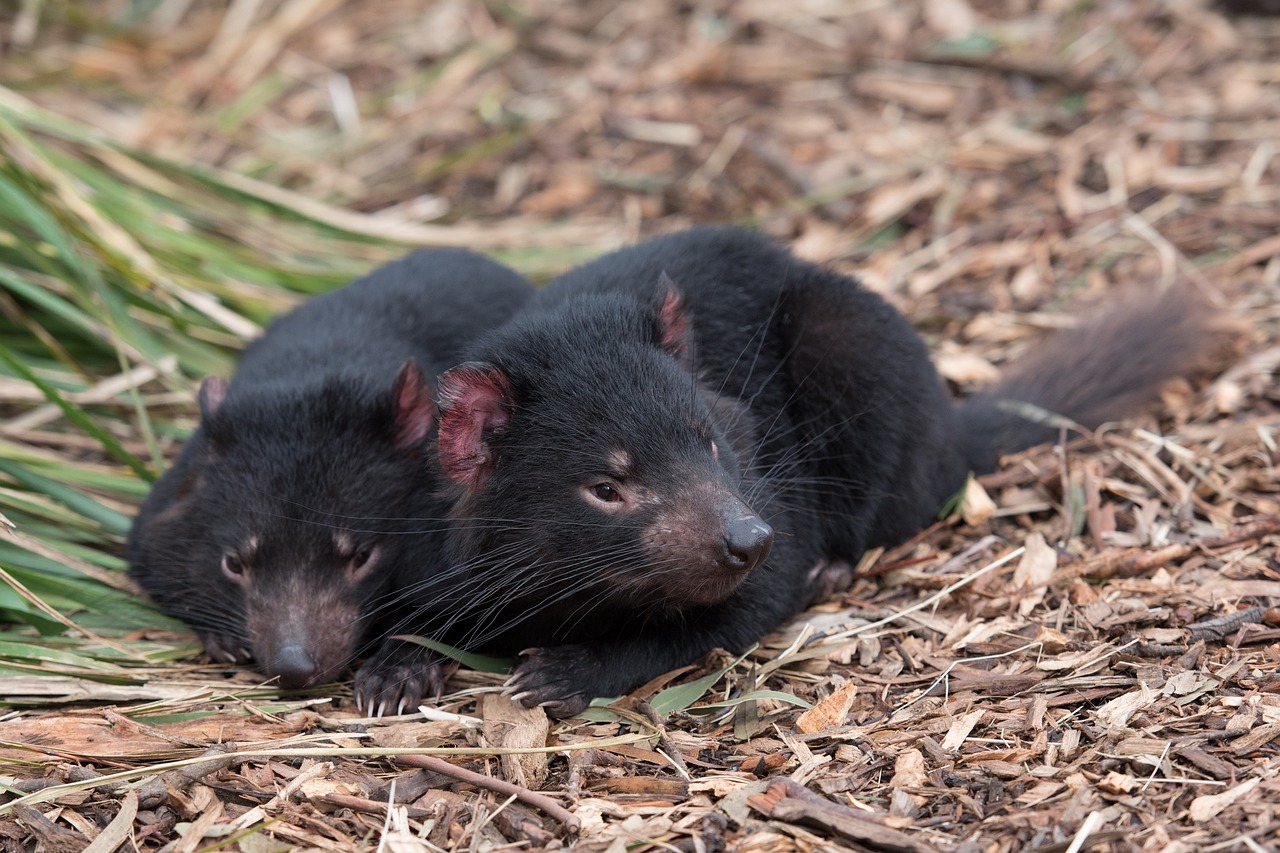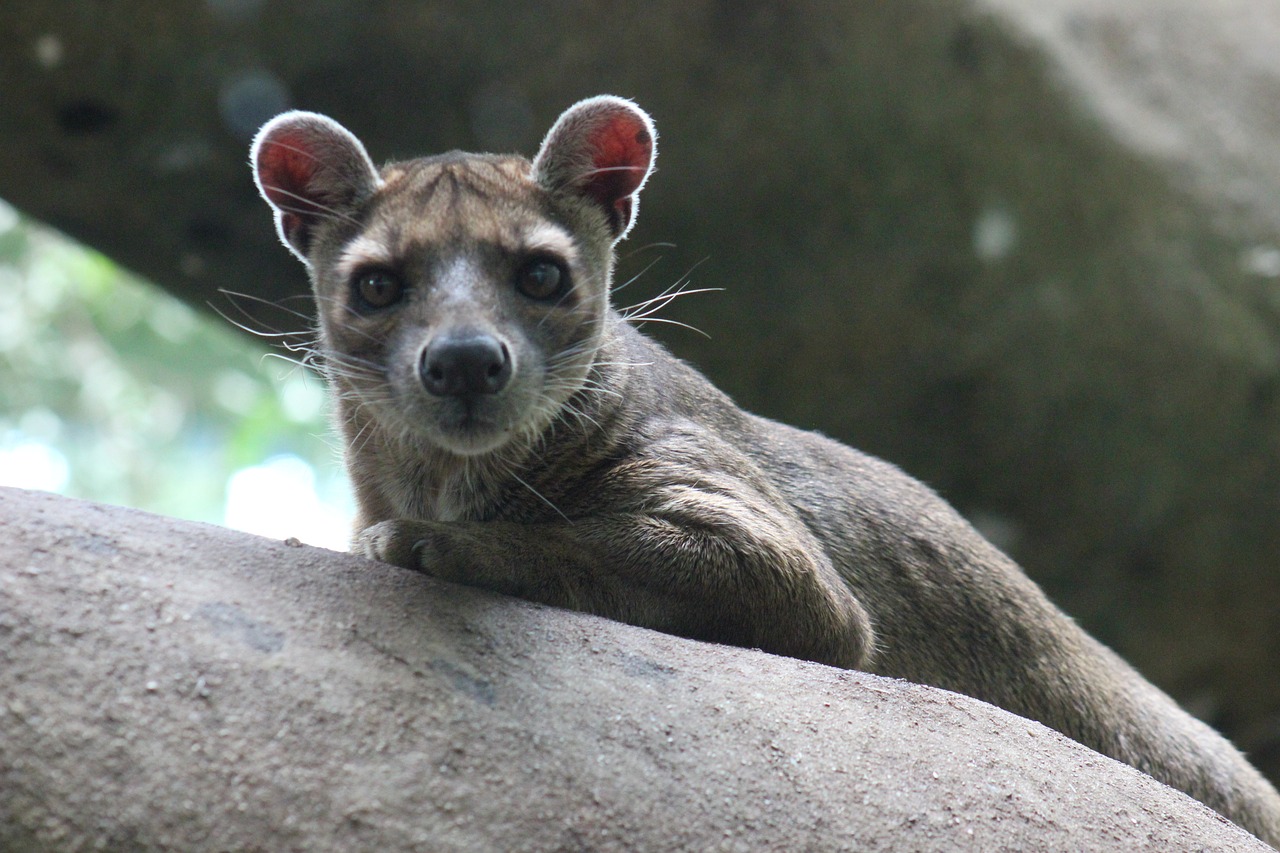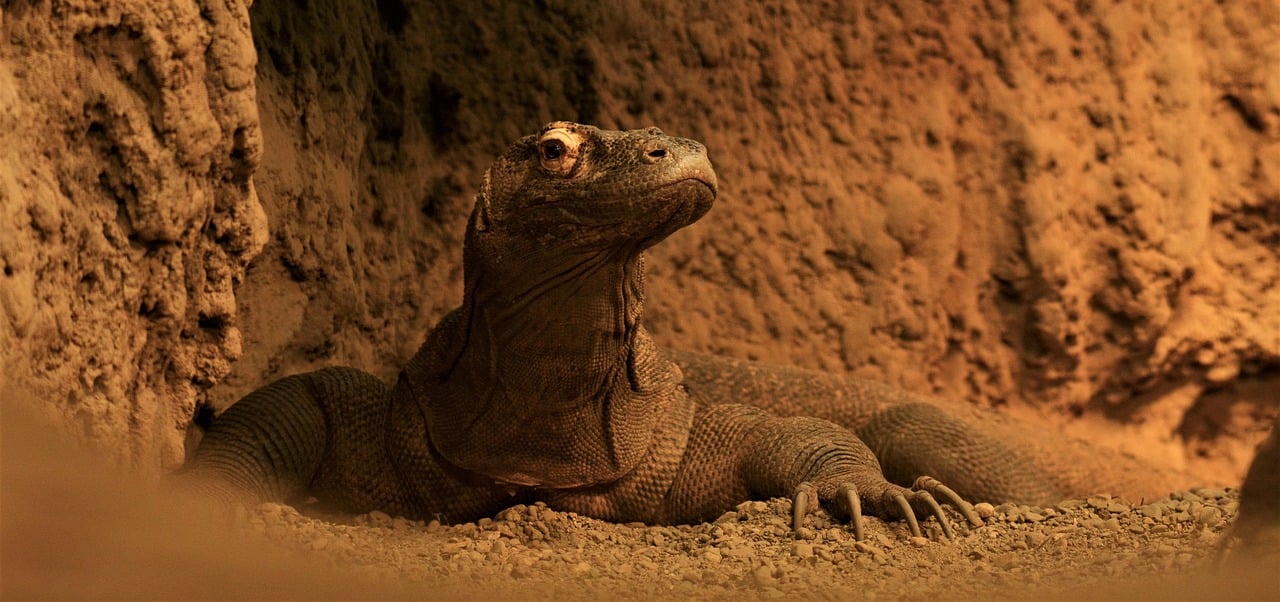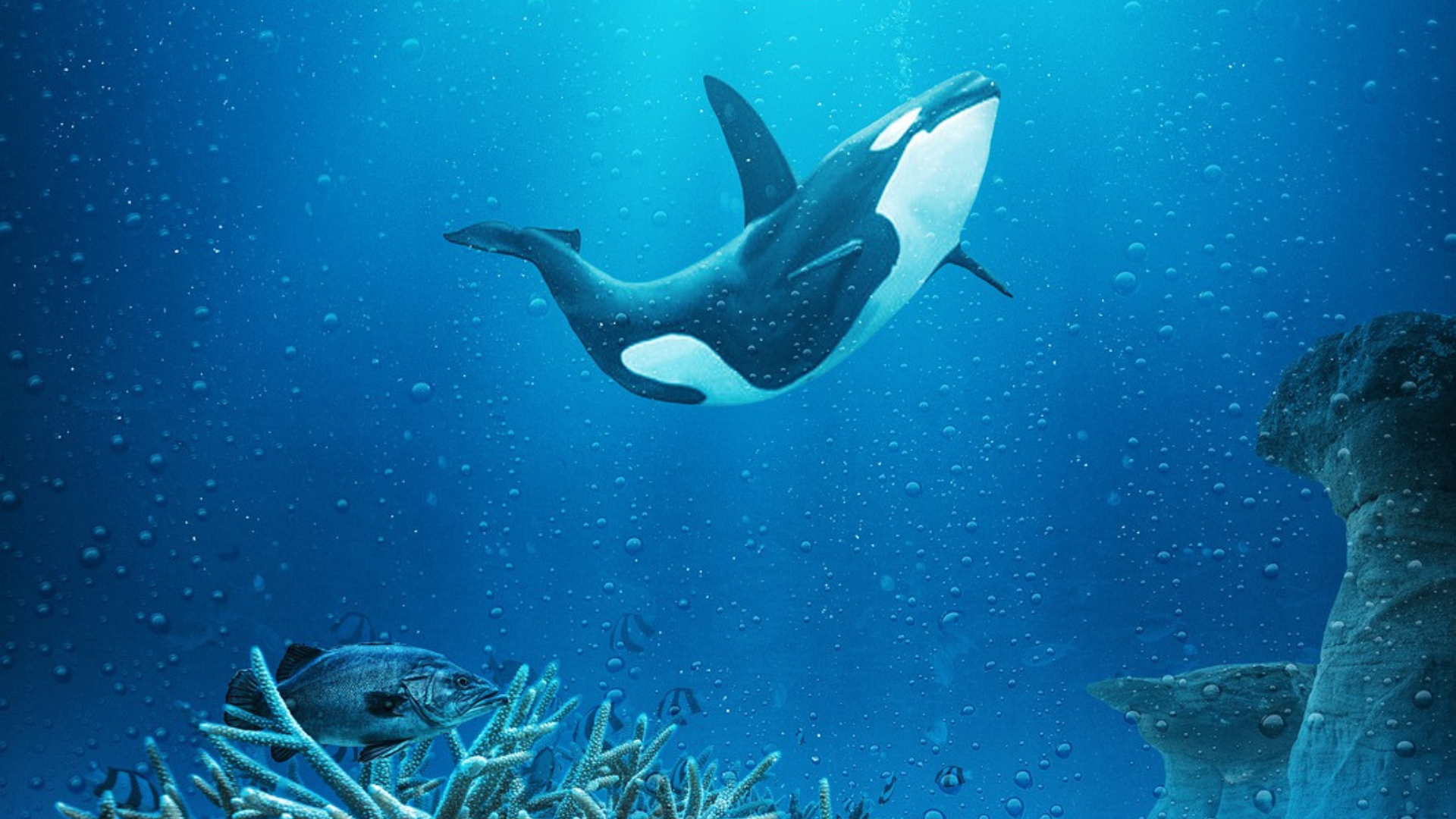Where do you want to travel?

What kind of pet do you want to have?

What environmental issue concerns you the most?

When you are bored, what do you do?

Who do you live with?

What is your favorite time of day?

What apex predator are you?
Tasmanian Devil

Looks like you’re a Tasmanian devil!
Something that you and this carnivorous marsupial from Australia have in common is tons of strong character! They are stocky and muscular, have black fur, excrete a pungent odor, have a keen sense of smell, and an extremely loud and startling screech. An apex predator, their hunting skills and ferocious feeding habitats are aided by their large head and neck, giving them the strongest bite per unit body mass of any extant predatory land mammal.
How you spend your time is important, so you like to participate in events with your close-knit community — just as the devils do! Tasmanian devils are usually observed in solitude, but it’s a group activity when it comes to feeding. Predominantly crepuscular as juveniles and nocturnal as adults, these animals are active during twilight. Juveniles are also excellent climbers, a skill necessary for escaping predation. When inactive, they can be found burrowing underground in dens, which they maintain as home for life. The digging to produce these lifelong homes enriches soils and buries leaf litter, thus helping to reduce the intensity of wildfires.
Tasmanian Devils are protected, but they are still listed as endangered. The greatest current threat to their populations is Devil Facial Tumor Disease (DFTD), however they also face threats from human activity — plastics present in devil scats are now an unfortunate norm.
Did you learn something? Go back and take the quiz again and find out more about apex predators and the threats to our ecosystems.
Something that you and this carnivorous marsupial from Australia have in common is tons of strong character! They are stocky and muscular, have black fur, excrete a pungent odor, have a keen sense of smell, and an extremely loud and startling screech. An apex predator, their hunting skills and ferocious feeding habitats are aided by their large head and neck, giving them the strongest bite per unit body mass of any extant predatory land mammal.
How you spend your time is important, so you like to participate in events with your close-knit community — just as the devils do! Tasmanian devils are usually observed in solitude, but it’s a group activity when it comes to feeding. Predominantly crepuscular as juveniles and nocturnal as adults, these animals are active during twilight. Juveniles are also excellent climbers, a skill necessary for escaping predation. When inactive, they can be found burrowing underground in dens, which they maintain as home for life. The digging to produce these lifelong homes enriches soils and buries leaf litter, thus helping to reduce the intensity of wildfires.
Tasmanian Devils are protected, but they are still listed as endangered. The greatest current threat to their populations is Devil Facial Tumor Disease (DFTD), however they also face threats from human activity — plastics present in devil scats are now an unfortunate norm.
Did you learn something? Go back and take the quiz again and find out more about apex predators and the threats to our ecosystems.
Fossa

Looks like you’re a fossa!
Don’t be fooled by their appearance — although medium-sized and cat-like, this carnivorous creature is actually a member of the civet family and is the largest land predator in megadiverse Madagascar. They have a head-body length of 70-80cm (28-31in) and a tail length of 65-70cm (26-28in), a sleek and dense grayish to reddish brown coat, and sharp, semi-retractable claws.
You might relate to the fossa’s independent lifestyle, as they tend to live and hunt in solitary. Being nocturnal, fossa are mostly active in the night, utilizing their physique and intelligence to effortlessly bound through terrestrial and arboreal ecosystems to find their next meal. Their prey is largely composed of lemurs, but also includes fish, birds, rodents, reptiles, and sometimes livestock.
While they have no natural enemies, fossas are considered a vulnerable species because of human presence. The biggest threat to their population is deforestation, which leads to habitat loss and fragmentation. Plastics have also infiltrated their lives, their prey consuming them and the materials transferring to fossa when they feed. The material also has clogged filtration systems, degrading the water quality in their habitats.
Did you learn something? Go back and take the quiz again and find out more about apex predators and the threats to our ecosystems.
Don’t be fooled by their appearance — although medium-sized and cat-like, this carnivorous creature is actually a member of the civet family and is the largest land predator in megadiverse Madagascar. They have a head-body length of 70-80cm (28-31in) and a tail length of 65-70cm (26-28in), a sleek and dense grayish to reddish brown coat, and sharp, semi-retractable claws.
You might relate to the fossa’s independent lifestyle, as they tend to live and hunt in solitary. Being nocturnal, fossa are mostly active in the night, utilizing their physique and intelligence to effortlessly bound through terrestrial and arboreal ecosystems to find their next meal. Their prey is largely composed of lemurs, but also includes fish, birds, rodents, reptiles, and sometimes livestock.
While they have no natural enemies, fossas are considered a vulnerable species because of human presence. The biggest threat to their population is deforestation, which leads to habitat loss and fragmentation. Plastics have also infiltrated their lives, their prey consuming them and the materials transferring to fossa when they feed. The material also has clogged filtration systems, degrading the water quality in their habitats.
Did you learn something? Go back and take the quiz again and find out more about apex predators and the threats to our ecosystems.
Komodo Dragon

Looks like you’re a Komodo dragon!
Underestimating these apex predators would be a huge mistake. With a total length of up to 3m (10ft) and a mass of 135kg (~300lbs), Komodo dragons are the largest extant lizard species. They have a long neck, sharp and recurved claws, serrated teeth — each tooth with 4-5 replacements, a gray or clay-colored osteoderm, a yellow colored tongue, and a seriously sensitive sense of smell.
Like yourself, Komodo dragons appreciate a personal space to relax.The dragons originate from the Komodo Islands and a few other Lesser Sunda Islands of Indonesia and where they hatch is where they stay. As ectotherms, they spend plenty of time basking in the sun and other times they’re in search of sustenance. Dragons are proficient hunters, with an ability to smell carrion and other prey — like pigs, deer cattle, and sometimes humans — 11km (6.8mi) away, charge at speeds of up to 21kmh (13mph), and sharp teeth to puncture and tear. While they have a weaker bite force than some other predators, they make up for it with their highly venomous saliva that inhibits the blood clotting in a victim.
Today, Komodo dragons are classified as an endangered species and despite their isolated location, they still experience the consequences of climate change. Human fossil fuel consumption in the name of advancement has led to the progression of global warming. As the glacial ice continues to melt, the sea levels rise, and the island habitat of these animals is predicted to be significantly limited in the near future.
Did you learn something? Go back and take the quiz again and find out more about apex predators and the threats to our ecosystems.
Underestimating these apex predators would be a huge mistake. With a total length of up to 3m (10ft) and a mass of 135kg (~300lbs), Komodo dragons are the largest extant lizard species. They have a long neck, sharp and recurved claws, serrated teeth — each tooth with 4-5 replacements, a gray or clay-colored osteoderm, a yellow colored tongue, and a seriously sensitive sense of smell.
Like yourself, Komodo dragons appreciate a personal space to relax.The dragons originate from the Komodo Islands and a few other Lesser Sunda Islands of Indonesia and where they hatch is where they stay. As ectotherms, they spend plenty of time basking in the sun and other times they’re in search of sustenance. Dragons are proficient hunters, with an ability to smell carrion and other prey — like pigs, deer cattle, and sometimes humans — 11km (6.8mi) away, charge at speeds of up to 21kmh (13mph), and sharp teeth to puncture and tear. While they have a weaker bite force than some other predators, they make up for it with their highly venomous saliva that inhibits the blood clotting in a victim.
Today, Komodo dragons are classified as an endangered species and despite their isolated location, they still experience the consequences of climate change. Human fossil fuel consumption in the name of advancement has led to the progression of global warming. As the glacial ice continues to melt, the sea levels rise, and the island habitat of these animals is predicted to be significantly limited in the near future.
Did you learn something? Go back and take the quiz again and find out more about apex predators and the threats to our ecosystems.
Orca

Looks like you’re an orca!
You’re likely familiar with this apex predator — they are the most widely distributed cetacean. With a distinctive black and white pattern and global presence, orcas are a highly recognizable marine mammal. Males boast a length of about 8.2m (27ft), weight of 6000kg (13,300lbs), and dorsal fins reaching a height of 2m (~6ft). Females are slightly smaller, with a length of about 7m (23ft), about half the weight of males, and a dorsal fin height of up to 1m (~3ft).
The world is your comfort zone, as these animals are found in every ocean in the world. While more abundant in colder waters, like those surrounding Antarctica, Norway, and Alaska, they have also been found in tropical and subtropical regions. They don’t brave the oceans alone, traveling with family pods of up to 40 whales for life. Their social lifestyle plays into their expert hunting tactics they coordinate as a pod. These creatures also aren’t limited by time of day — orcas are diel, meaning they can be active at all hours.
Orcas don’t have an internationally formed conservation status, but when evaluated on national scales some pods are considered endangered. They face a variety of human threats, including net entanglement, sound disturbance, and contaminants, like toxic wastewater and plastics — which they can ingest from the consumption of affected prey.
Did you learn something? Go back and take the quiz again and find out more about apex predators and the threats to our ecosystems.
You’re likely familiar with this apex predator — they are the most widely distributed cetacean. With a distinctive black and white pattern and global presence, orcas are a highly recognizable marine mammal. Males boast a length of about 8.2m (27ft), weight of 6000kg (13,300lbs), and dorsal fins reaching a height of 2m (~6ft). Females are slightly smaller, with a length of about 7m (23ft), about half the weight of males, and a dorsal fin height of up to 1m (~3ft).
The world is your comfort zone, as these animals are found in every ocean in the world. While more abundant in colder waters, like those surrounding Antarctica, Norway, and Alaska, they have also been found in tropical and subtropical regions. They don’t brave the oceans alone, traveling with family pods of up to 40 whales for life. Their social lifestyle plays into their expert hunting tactics they coordinate as a pod. These creatures also aren’t limited by time of day — orcas are diel, meaning they can be active at all hours.
Orcas don’t have an internationally formed conservation status, but when evaluated on national scales some pods are considered endangered. They face a variety of human threats, including net entanglement, sound disturbance, and contaminants, like toxic wastewater and plastics — which they can ingest from the consumption of affected prey.
Did you learn something? Go back and take the quiz again and find out more about apex predators and the threats to our ecosystems.
Share your Results:
